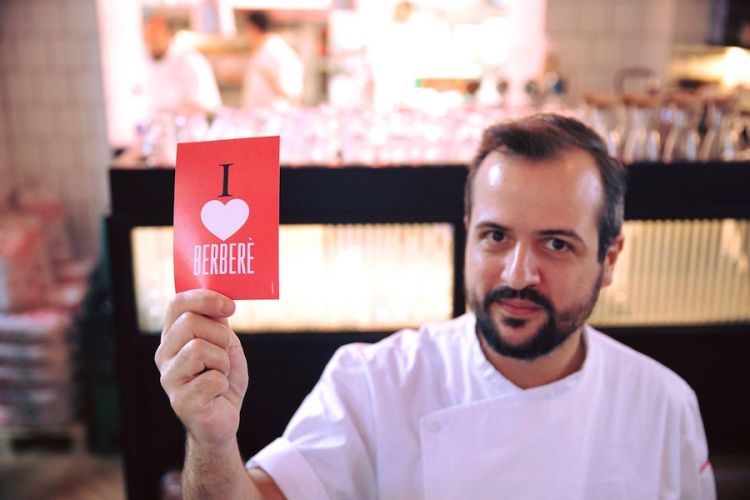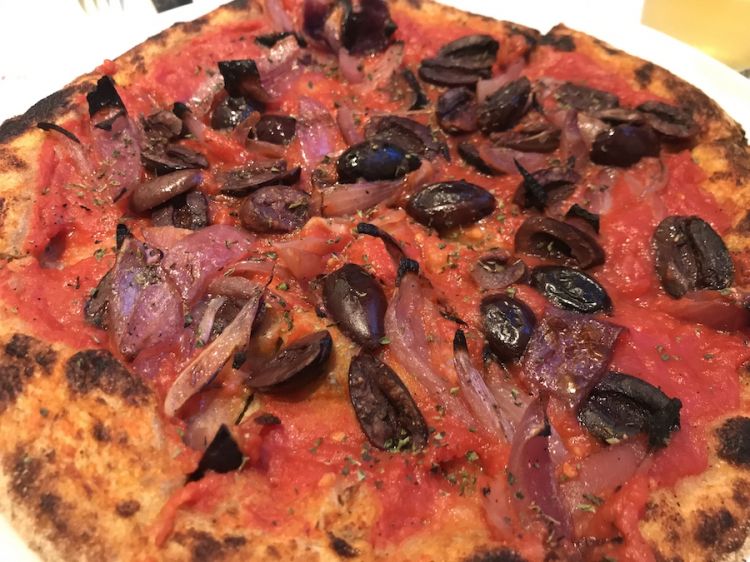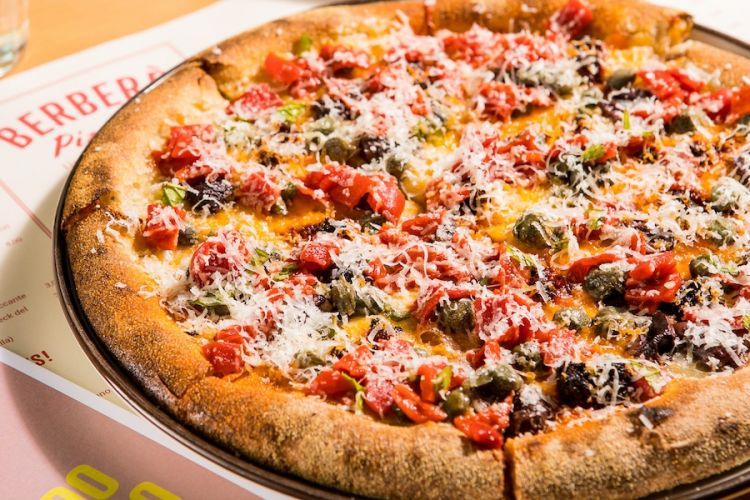Parsley is everywhere, so much so it’s never a compliment to say to someone [as in the Italian saying] that they’re like parsley, hence everywhere. To me, only bagnetto or salsa verde for boiled meat justify its existence in cooking. Otherwise, it could easily leave the kitchen and I’d live a happy life anyway. In fact, I’d live a better one because I would no longer need to ask chefs to avoid it. I hate it for a simple reason: it is almost always used as a pointless decoration, with the leaves picked from the stalk a moment before the seafood pasta or a meat dish leaves the pass to be served. Pure banality, because it only adds colour, but not flavour.

Matteo Aloe, born in Calabria in 1986, opened the first Berberè in Castel Maggiore (Bologna) on the 8th December 2010 at 24
It is for this reason that Matteo Aloe – the creator, with his brother Salvatore of the beautiful Berberè chain, 12 pizzerias in Italy and three in London – surprised me. I hadn’t realised before this August spent in Milan but the substance is unchanged: one of the three ingredients in their Marinara is parsley, with garlic and chilli pepper. People would protest in Naples, and indeed they still haven’t opened in the liveliest city in Italy, though the temptation is strong.
Basically there is no version around the world that includes parsley in pizza Marinara and even Matteo himself didn’t follow any culinary taste. It’s the oregano’s “fault”. On the 8th of December it will be 10 years since they opened the flagship pizzeria in Castel Maggiore right outside Bologna and at the time what happened was that oregano was used to aromatise too many pizzas «so we decided to remove it from Marinara and replace it with parsley».

Salamino piccante in which the addition of parsley gives an intriguing note to the seasoning
The summer menu also includes Salamino piccante with fiordilatte and tomato, an incredible pizza thanks to its rich flavours, while Marinara, is too minimalist, it's basically too poor. I don’t like parsley also because it brings me back memories from the Sixties, early Seventies when I, born in 1955, still lived with my family. At the time, you ate what you were served and if you didn’t finish everything, you could not leave the table, and if you really had to leave, then you’d end up eating for dinner what you hadn’t finished for lunch.
In Milan and in Lombardy it was indeed a triumph of risottos with butter and rich sauces, but there was also another popular recipe made with a mild broth, little more than hot water, the way I remember it, which was a triumph of poverty in the kitchen, often mirroring some economic difficulties: Riso e erborin, sometimes made precious with figadini or curada. Translation: soup of Rice and parsley, with or without chicken liver or coratella.

The excellent pizza Mediterranea
It was usually served with a sentence I ended up hating, just as much as the dish itself: «Tonight let’s have a light dinner, after eating so much». Which for me in fact was never much, but I wouldn’t dare to say that to my parents.
While the Marinara with parsley didn’t convince me, for the other pizzas it was the opposite, as always. While I wait for Viola to be back in the menu with the cooler months – its name comes from the use of beetroot cream, plus fried leeks, feta and black olives, a recipe that is almost a masterpiece, I was conquered by Mediterranea, which I consider the true pizza standard, with its essential deliciousness: black olives, fried red onion, tomato and oregano from Pantelleria. And the already mentioned Salamino piccante as well as the richer Salsiccia e parmigiano, finished with tomato and fennel seeds.

The Calabrese of chef Luca Abbruzzino for the Berberè pizzerias. Photo Alberto Blasetti
During the spring confinement, Matteo Aloe asked chef Luca Abbruzzino from Catanzaro for a recipe. Calabrese was thus born. It is like fire, but very enjoyable, balanced with Nduja di Spilinga and roasted peppers, black olives, capers, pecorino from Crotone, fiordilatte and mint. A rich complexity.
Final note: in the middle of the pandemic, the Aloe brothers bought out their shares of the pizzerias in London from their English partners, so when they will open again, they will no longer be called Radio Alice, but Berberè like the other twelve between Torino and Rome. When they opened in 2016, pronouncing that Ethiopian spice sounded too difficult by the Thames.
Translated into English by Slawka G. Scarso